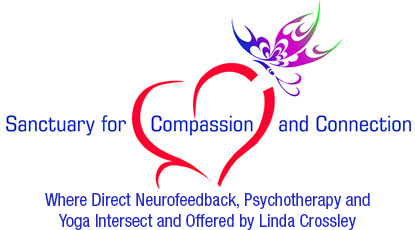5 Intention-setting Ideas for Navigating Times of Transition and Transformation
“The secret of change is to focus all of your energy, not on fighting the old, but on building the new.” ― Socrates
Change can happen all of a sudden or it can creep up on us without truly recognizing it as such! Either way, change often brings fear into our hearts. Humans are creatures of habit and comfort so we naturally tend to resist anything that might impact the familiar flows we have created in our lives, sometimes even when those habits are uncomfortable.
And I think most of us will agree that sometimes our habits can begin to feel stale, dare I say boring! It is when we consciously become aware of those habits that have us feeling a little stuck in life, that we begin to open ourselves up to change, even welcoming it.
So how might we work with something that might both strike fear in our hearts and invoke feelings of excitement at the same time? A good starting place might be to acknowledge that fear and excitement feel very similar physiologically in our bodies. Consider a moment where you felt fear and excitement, maybe while waiting in line for a roller coaster ride or a scary movie, or your first day of school – whether it was kindergarten or college, or the day you and your significant other learned that you were expecting your first child. Can you sense your heart rate increasing, your breath getting more shallow, the butterflies moving around in the belly, and the pent-up energy needing expression as you consider those moments?
So, to help tilt the scales away from fear and more towards excitement during such times of change and growth, below I offer intention-setting ideas that might help you navigate such transitions in your life with more ease and excitement:
- Embrace impermanence. Evolution and transformation require change. That’s both the good – and bad – news: change is inevitable. It is truly the one thing that we can count on. So when our bodies signal that it is moving into the grip of fear, a helpful Mantra that you might keep handy is “This too shall pass”, reminding us that change in the moment is neither bad nor good, yet is moving the collective consciousness towards transformation where it is most needed for our ultimate evolution.
- Ground through asana. Sensing the pent-up energy that needs expression when we feel fear and excitement, offer the body some specific yoga poses (asanas) to give direction to that energy. Consider Mountain (Tadasana), Warrior (Virabhadrasana), or Goddess (Utkata Koneasana) pose as a way to ground our energy into the earth and tune into the natural rhythms of life reflected through nature.
- Calm through pranayama. Pranayama is the practice of bringing control to your breath, ensuring that your life force energy – prana – is able to flow into the body. When change comes upon us suddenly, it can often times feel overwhelming to the mind and body, narrowing our attention and shutting down the connection to the parts of our brain that assist with decision-making as well as tightening the muscles in the body, including the diaphragm, the primary skeletal muscle responsible for the process of respiration. Therefore, if we can consciously turn our attention to our breath during times of transition, it will help to relieve the tension in the muscles, including turning the connections back on in the brain, opening the windows to the unlimited possibilities change can bring. Try simply closing your eyes and bringing your next breath in through the nose on a slow count of four and release the breath through the nose on that same slow count of four. Repeat that breath pattern two more times, feeling how the in-breath creates a sense of expansion in the torso and the out-breath creates a sense of release. Adding this conscious lengthening of the breath to the above Mantra (This too will pass) supports the body-mind connection while riding the waves of change.
- Turn to the guru inside. The Sanskrit term Svadhyaya translates to ‘self-study’ and it is one of the basic tenets of a yoga practice as well as talk therapy. Through this practice, we learn what it is we believe, think, and need and why. Without such awareness, we position ourselves to be at the mercy of the changes we experience. Perhaps adding this practice through journaling to those moments after pranayama and mantra, so you can gain more clarity around the changes that you want to make in your life, thus becoming a co-creator of your heart’s desire. You will be wonderfully surprised how cooperative the Universe is!
- Meditate through uncertainty. When we are sensing we want to make a change yet we are feeling indecisive around the new direction we might want to take, I encourage you to lean into the uncertainty by inviting it to sit with you for awhile. Instead of trying to distract yourself or seeking advice from others, perhaps find a place where you can sit quietly for 5-10 minutes, allowing the body to find some comfort, and let the mind focus on the uncertainty. You might spend the first few minutes practicing your pranayama to release some of the tightness in the body and mind. Then simply notice what comes up in the mind, without judging, dismissing or discounting, allowing all possibilities to float into your awareness. What you may begin to notice is how the body responds to some of the possibilities. Certain options might create a sense of restriction somewhere and others might create a sense of relaxation. You may not gain immediate clarity with all of the details, yet perhaps what you will sense is an inclination towards one of the possibilities. Taking any small step toward that inclination will bring even more light to the direction of change, with course-correction opportunities too!




